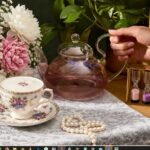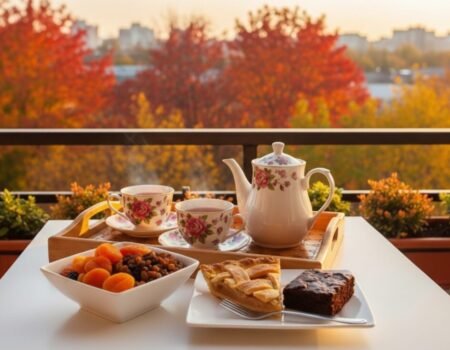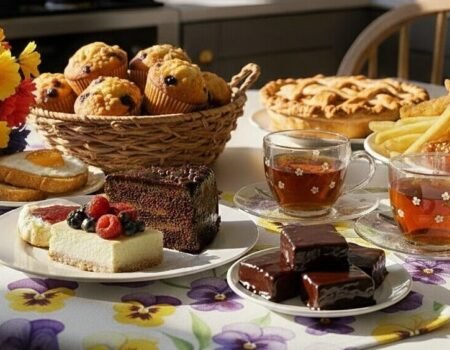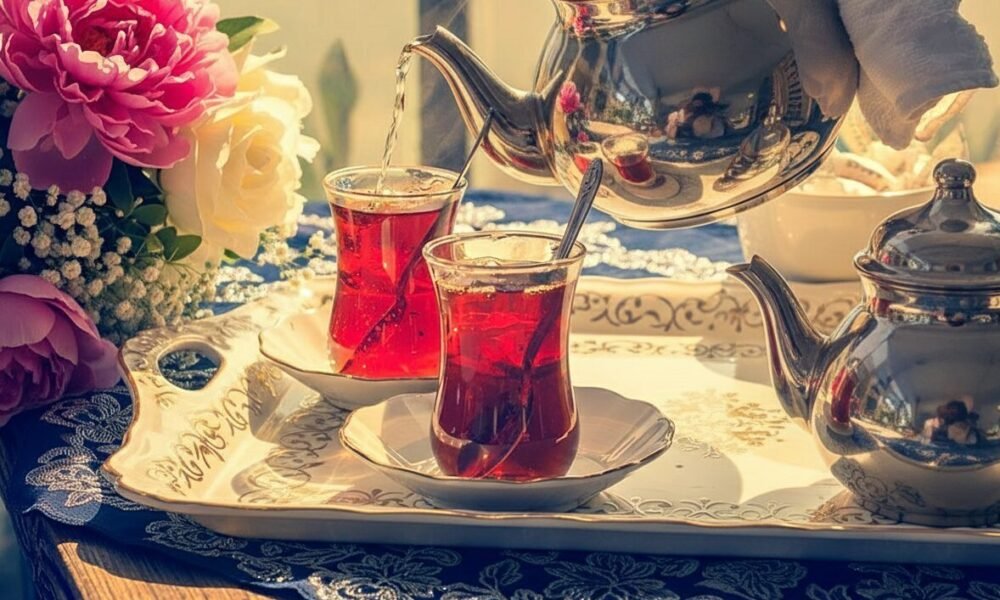
Brewing Black Tea: A Guide to Perfectly Brew Black Tea at Home
Index
Black tea comes from the fully oxidized leaves of the Camellia sinensis plant, giving it a bold flavor profile.
This guide breaks down the simple steps to perfect your brewing technique with the right water temperature, steeping time, and tea-to-water ratio.
Key Takeaways
- Black tea needs water at 205°F (96°C) for optimal brewing, with a steeping time of 3-5 minutes depending on the variety.
- Use one teaspoon of loose leaf tea per 8 ounces of water as a starting point, adjusting to your taste preferences.
- Filtered water significantly improves tea flavor by removing minerals and chemicals that mask the tea’s natural taste.
- Over-steeping is the most common brewing mistake, releasing excessive tannins that create bitter, astringent flavors.
- Different black tea varieties offer unique flavor profiles – Assam is malty, Darjeeling has muscatel notes, and Red Jade features sweet cinnamon undertones.
Essential Steps for Brewing Black Tea

Brewing black tea requires a few key steps to achieve a perfect cup every time. You’ll need to select quality leaves, heat water to just the right temperature, and time your steep carefully for optimal flavor extraction.
Choosing the right tea leaves
Quality black tea starts with selecting the right leaves. The Camellia sinensis plant produces various black tea types, each with distinct flavor profiles. Assam offers a bold, malty taste, while Darjeeling brings a lighter, muscatel character.
Red Jade delivers a unique sweet cinnamon note that many tea lovers enjoy. Your personal taste preferences should guide your selection process. Look for loose leaf tea rather than tea bags for a fuller flavor experience.
Loose leaves expand fully during steeping, releasing more complex flavors and aromas.
Tea freshness matters greatly for your perfect cup. Fresh black tea leaves appear vibrant and smell aromatic. Older leaves lose their scent and produce a flat-tasting brew. Store your tea in an airtight container away from light, moisture, and strong odors to maintain its quality.
One teaspoon of loose leaf tea per 8 ounces of water serves as a good starting point for brewing. You can adjust this ratio based on how strong you prefer your tea.
Heating water to the optimal temperature

Black tea needs water at exactly 205°F (96°C) to release its full flavor. This temperature breaks down the tea leaves perfectly without burning them. You can use a kettle with temperature control for the most exact results.
Many tea experts suggest filtered or spring water since it lacks the minerals that might change your tea’s taste. If you don’t have a special kettle, just bring your water to a boil, then let it rest for 30 seconds.
Another simple trick involves adding a splash of cold water to your boiled water. The right water temperature makes all the difference between a bitter cup and a perfect brew with rich flavors.
Steeping time for the perfect flavor
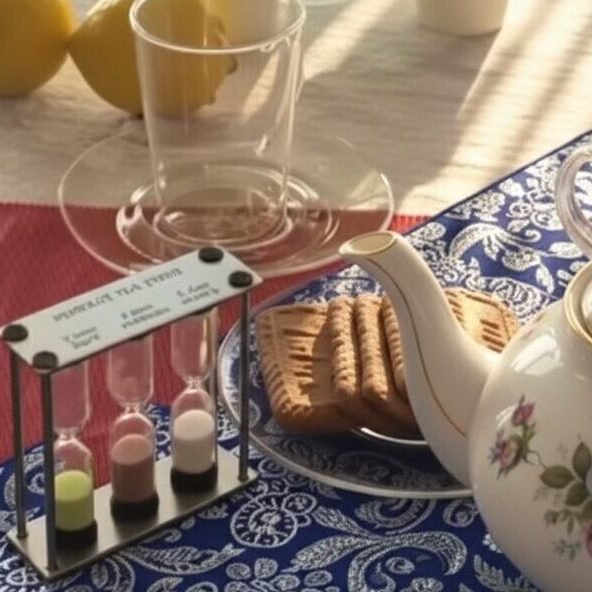
Steeping time makes all the difference between a perfect cup of tea and a bitter disappointment. Black tea needs 3 to 5 minutes to release its full flavor profile, but each variety has its sweet spot.
Darjeeling reaches its peak at 3 minutes, while Earl Grey requires 5 minutes to develop its signature taste. English Breakfast falls right in the middle at 4 minutes. These times matter because they control how much tannin gets into your cup.
A timer helps you nail the perfect steep every time. Too short, and you miss the rich flavors hiding in the leaves. Too long, and your tea turns bitter and astringent. The type of tea leaf also affects steeping time – larger leaves often need more time than finely cut ones.
Your personal preference plays a role too – some tea drinkers enjoy a stronger brew that comes from extra steeping time, while others prefer a lighter cup with less caffeine.
Tips for Enhancing Your Black Tea Brewing
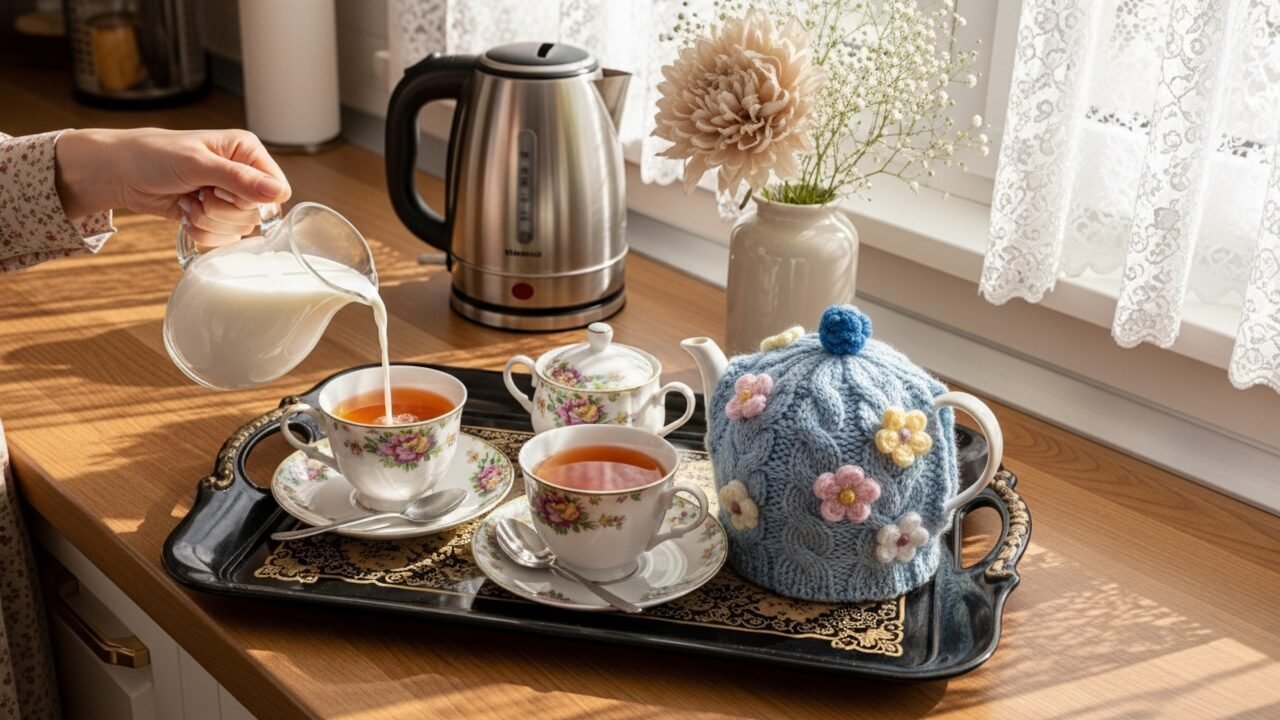
The right brewing techniques can transform your black tea from good to exceptional. Small changes to your process will make a big difference in taste and aroma.
Use high-quality water
Clean, filtered water makes a huge difference in your tea’s taste. Many tea lovers don’t realize that tap water often contains minerals and chemicals that can mask the true flavor of black tea.
We tested various water sources and found that filtered water consistently produced better results.
Try this simple test: brew identical tea leaves with tap water and filtered water, then compare the results.
Your water choice forms the foundation of your brewing process. First Flush Darjeeling, with its delicate flavor profile, particularly suffers from poor water quality. For this premium tea, follow the estate’s guidance; most first-flush lots brew best between 175°F (~80°C) and 195°F (~90°C).
A good tea kettle with temperature control helps achieve this precision. Next, we’ll explore why avoiding over-steeping prevents your tea from becoming bitter and unpleasant.
Avoid over-steeping
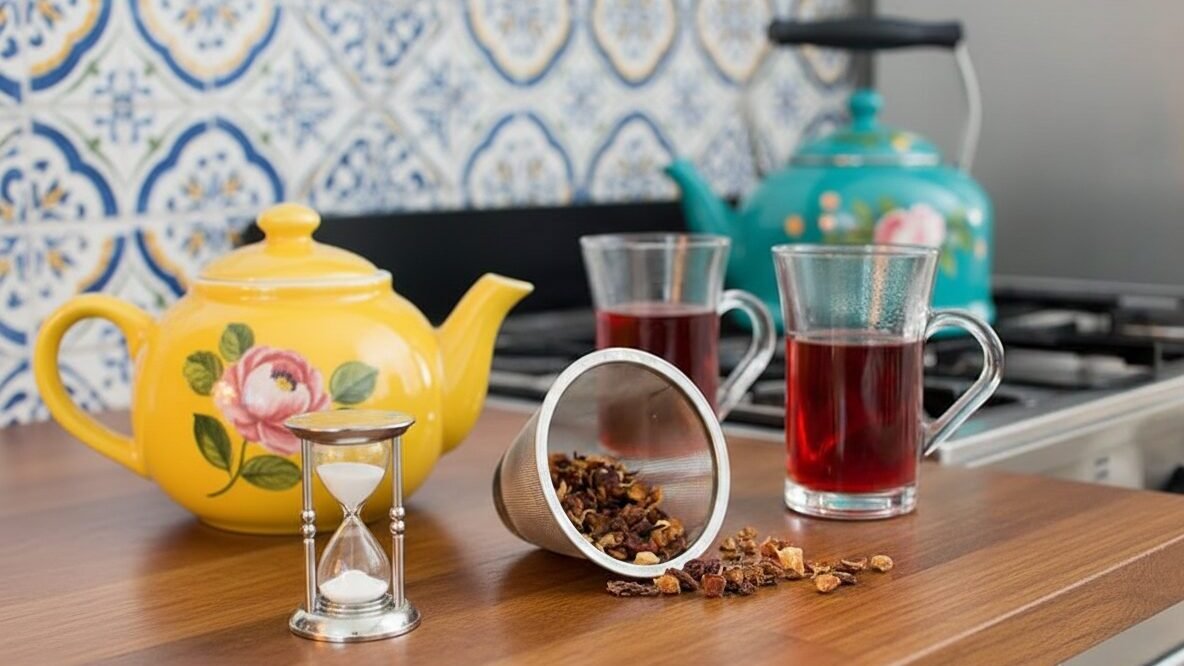
Just as pure water forms the base of great tea, proper timing prevents a bitter brew. Over-steeping ranks as the most common mistake tea lovers make at home. Black tea needs only 3 to 5 minutes to release its full flavor profile.
Beyond this window, tannins flood your cup, creating that harsh, mouth-drying sensation that ruins the experience.
A simple kitchen timer serves as your best ally against this pitfall. Set it as soon as the leaves touch hot water, and remove your infuser or strain your tea once the alarm sounds.
For stronger tea, add more leaves rather than extending steep time. This approach boosts flavor intensity without pulling those unwanted tannic notes into your cup. The perfect cup balances bold taste with smooth finish – a goal easily reached with proper timing.
Common Mistakes to Avoid When Brewing Black Tea

Many tea lovers make simple errors that ruin their perfect cup. These mistakes can turn a potentially delightful experience into a disappointing one.
Measuring & Proportions
- Too little tea – Creates weak, watery brew lacking flavor
- Too much tea – Results in overly bitter cup that masks natural flavors
- Ignoring ratios – Use 1 teaspoon (2g) per 8 oz water, or 1g per 100ml for consistency
- Pro tip: Use a kitchen scale for accurate measuring
Temperature & Timing
- Water too hot – Extracts harsh bitter compounds from black tea
- Over-steeping – Releases excessive tannins, creating unpleasant taste
- Rushing the process – Prevents full flavor development
- Pro tip: Set a timer and allow proper steeping time for complete flavor extraction
Water & Equipment Quality
- Poor water quality – Significantly affects final taste
- Dirty teaware – Transfers old flavors to fresh tea
- Cold teapot/cup – Cools water too quickly, preventing proper extraction
- Pro tip: Use filtered water and pre-warm your teapot or cup before brewing
Storage
- Improper storage – Exposure to strong odors, direct sunlight, heat, or moisture degrades quality
- Pro tip: Store loose tea in airtight containers in a cool, dark, dry place
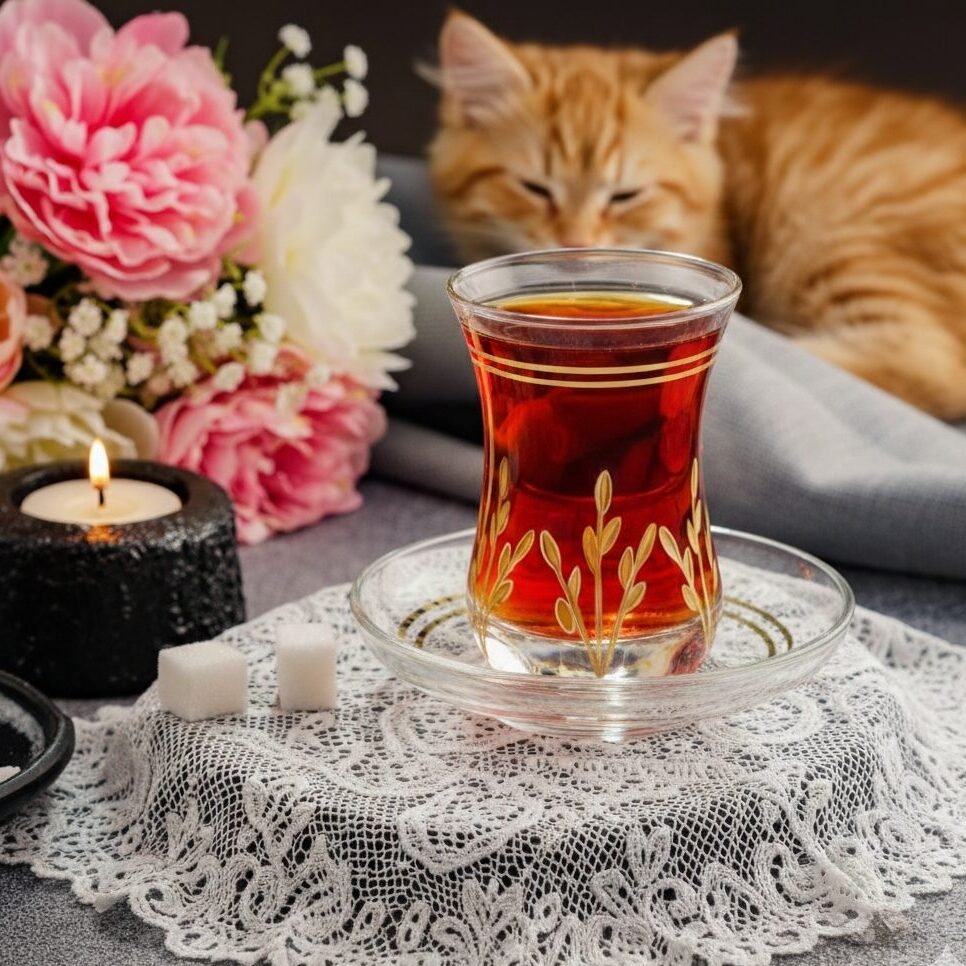
Conclusion
Brewing black tea rewards patience and practice. You now have the tools to create a perfect cup with the right leaves, water, and timing.
Tea brewing follows one simple rule: if it tastes good to you, you’ve done it right. Your tea journey has just begun, so grab your infuser, heat your water to 205°F, and enjoy the rich traditions of this beloved beverage at home.
FAQs
1. What is the best way to brew black tea at home?
For most robust black teas, aim for water just off a boil, around 205°F (96°C). If you don’t have a temperature-controlled kettle, you can bring water to a full boil and let it rest for 30-60 seconds. However, for more delicate varieties like Darjeeling, use a lower temperature, between 185°F and 195°F (85°C−90°C), to avoid scorching the leaves.
2. Should I add milk to my black tea?
Adding milk to black tea is a popular choice, especially in the United Kingdom. You can add it before or after pouring the tea, though many tea experts suggest adding the milk after brewing. This allows you to judge the tea’s strength first.
3. Can I use a French press to brew black tea?
Yes, a French press works well for brewing loose leaf black tea. Add the proper amount of tea to the press, pour in hot water, and place the lid on top without pressing down. After steeping, slowly press down to separate the tea leaves from the liquid.
4. Why does my black tea taste bitter?
Tea becomes bitter when it steeps too long or when water that is too hot is used for certain types. For black teas like Earl Grey, use a timer to avoid over-steeping. Western style brewing typically needs 3-5 minutes, while green and oolong teas require lower temperatures to prevent bitterness.
5. How much tea should I use per cup?
For a standard cup, measure the tea using 1 rounded teaspoon or a tea ball filled with 2-3 grams of tea leaves per 8 ounces of water. Adjust this amount based on your taste preference and the specific type of black tea you’re brewing.
6. What can I add to black tea besides milk?
Lemon adds a bright, citrus flavor that works well with many black teas. Honey or sugar sweetens the tea naturally. Some enjoy adding fruit pieces for extra flavor. Cold brew methods can also create a smoother, less acidic version of your favorite black tea.
References
- https://www.twaceteashop.com/brew-black-tea (2024-12-29)
- https://www.saratogateaandhoney.com/blogs/how-to-brew-tea/how-to-brew-black-tea?srsltid=AfmBOoorTRrsM0cyPqTdJw6XqMBJzGH1uIcSfT-SdJlyCCbqNtRrgc5j
- https://shop-chopsticks.com/blogs/tips/how-long-to-steep-black-tea?srsltid=AfmBOorj59pwLbluVjZE2EbA1a9d_5aF4h54BlIVrxJ-O-LJjS5TxcGC (2024-11-21)
- https://www.hackberrytea.com/blogs/tea-education/tea-brewing-101-black-tea?srsltid=AfmBOorkbJXzvPpRJ2cEABsIzcEmFI3eXayE1mkyuEvwTJahIjsdKUnH
- https://goodricketea.in/blogs/home/savor-the-perfect-cup-expert-tips-for-brewing-black-tea?srsltid=AfmBOoqz_6N–12naqbWMR_EsWlmhDsl7q9HxiGyL5noT3h5SNCBycpL (2024-09-20)
- https://goodricketea.in/blogs/home/savor-the-perfect-cup-expert-tips-for-brewing-black-tea?srsltid=AfmBOor_ojtF93aSodWaGSH4E2svKH_fxx7qCc2e8FVJXT28HZ-WG4LN
- https://www.teaformeplease.com/12-mistakes-when-brewing-tea/ (2024-04-22)
- https://www.inherigin.com/blogs/news/learn-about-different-black-teas-a-beginners-guide (2024-08-27)
- https://blackscottiechai.com/ultimate-guide-to-tea-varieties/?srsltid=AfmBOoqmkxTENsvDjmPCAds3h7V5yiYvB1O9JJTCCSnIU6v5p0PpPbrx


